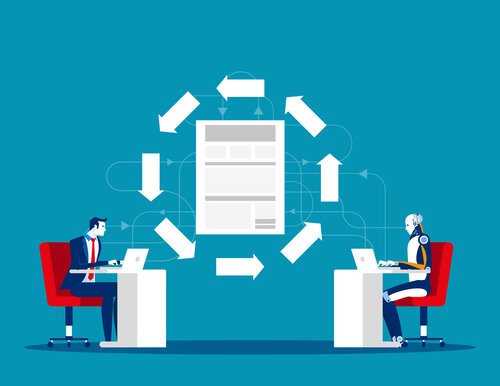How to Use RPA to Increase Employee Retention

Robotic process automation may sound like an impersonal way of doing business. After all, it boils down to using machines such as software robots, to mimic repetitive human actions and to fulfill the tasks faster, more accurately, and in a more secure manner.
But there's more to it than that. Starting the automation journey in your company empowers both your employees and your customers.
The employees no longer have to carry out routine, monotonous tasks, like migrating raw data between Excel files, because the bots can do it error-free, more productively, and more efficiently.
The staff is therefore clear to engage in more valuable jobs that leverage human-specific abilities such as creativity, complex decision making or communication skills, and, consequently, their level of job satisfaction increases.
This is the main rationale for using robotic process automation to increase employee retention since talents are less likely to leave jobs that involve less drudgery. Your staff will also have greater flexibility and time to engage with customers and, as a consequence, to provide higher-value, more empathic customer service. This, in turn, improves customer satisfaction. This is why RPA is your competitive advantage.
From this perspective, UiPath's motto should come as no surprise: "We make robots so people don't have to be robots."
In fact, RPA may be precisely what allows corporations to go beyond the image of cold, heartless, and faceless entities. When your employees do not have to spend long hours copy-pasting data or doing payroll administration, it is a lot more likely that they will attend customers with greater care, thus improving customer experience.
How robotic process automation increases employee retention
According to Martin Weis, EMEIA Robotics Leader, EY, repetitive tasks are a key reason why people give up their jobs, which, in turn, calls for up to 30% hiring annually simply to renew the workforce.
So indeed, by removing the burden of dull, value-less jobs from employees' shoulders, the employee retention rate increases. In fact, contrasting the retention rate before and after RPA implementation is a relevant indicator of automation-driven benefits. Let us then see how exactly you can use RPA to increase employee retention rates.
1. Acknowledge the psychological effects of RPA deployment and proactively try to minimise the side effects
Leaving humans aside and focusing on robot-related issues was one of the RPA mistakes that we warned you about at the beginning of last year so that you can proactively avoid them.
Despite the objective fact that bots allow human employees to focus on jobs that involve complex decision making, creativity, thinking "outside the box", or human-to-human interaction skills, employees whose jobs are at risk of being replaced by software robots are likely to feel threatened at least initially, and hence oppose automation.
Our recommendation in order to avoid it was educating the staff regarding what robots can and cannot do, and how the bots will allow them to put to better use their human-specific expertise. The same holds true today.
The first step towards using RPA to increase employee retention is to take seriously and try to temper employees' emotional resistance, emphasizing the increased job satisfaction brought about by digitisation. Human-centered change management programs, for instance, are one way to ensure that the transformative potential of RPA is well received by your employees.
RPA can help human employees free up time from their workday, allowing them to focus on tasks that can be more rewarding. A great example of freeing up time can be seen in the following video, where an insurance professional is using an attended bot to free up 5–10 minutes per 1 email out of hundreds.